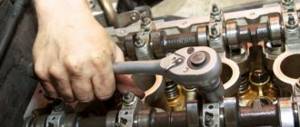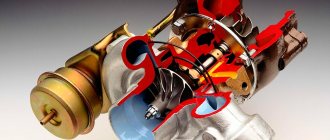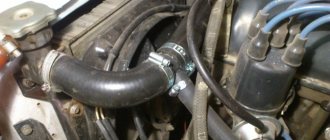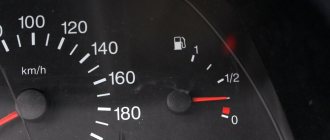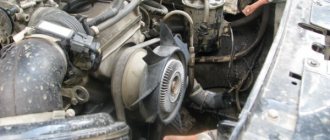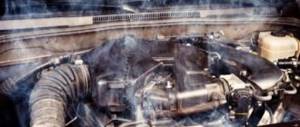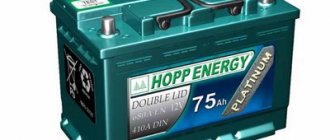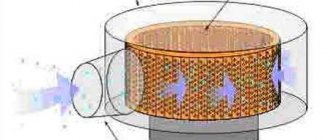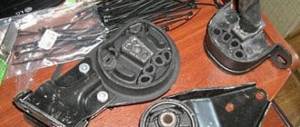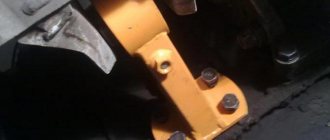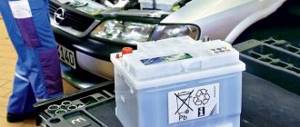HomeUsefulHow to overhaul an engine?
An internal combustion engine overhaul is a work process during which each individual component of the machine and the complete motor itself are brought to a condition reminiscent of the factory one. Such repair work includes disassembling and cleaning the engine, checking its components and their forced replacement, repair work on the crankshaft, cylinder block, fuel and oil systems, checking the crank mechanism. This type of repair should not be confused with a conventional engine overhaul. In the second case, only disassembly and replacement of parts that have lost their functionality are performed.
Driver actions that contribute to a quick overhaul:
- Delays in changing oil and filter increase friction between parts and mechanisms. A huge amount of wear waste products appears in the engine oil system;
- Low quality oil accelerates engine wear. It can cause channels to be strobed, oil does not flow to the mechanisms in the required quantity, scuffing appears and jamming occurs;
- another factor is poor fuel and air filters, poor connections in the intake system, which can lead to dust entering the engine, thereby causing accelerated wear of the cylinders and piston;
- irregularities in the adjustment of parts, late elimination of various faults;
- influences performance and operating conditions. You should try to drive in moderation to extend the life of your engine.
Characteristic signs of engine overhaul
The following phenomena can serve as a signal to take effective measures:
- strong soot appears in the NW;
- oil and fuel consumption increases;
- gaseous vapors escape from the ventilation with obvious signs of pulsating flows;
- multi-colored smoke appears from the exhaust pipe;
- the power of the internal combustion engine is significantly reduced;
- the engine starts to idle unevenly;
- the engine overheats, runs more harshly, intermittently;
- extraneous noise appears in the carburetor and muffler in the form of “shots” or “sneezing”;
- You can hear extraneous noise and knocking in the engine;
- oil pressure drops.
All of these symptoms will tell you that it is time to repair the engine. But here it is necessary to remember that serious problems with the engine are indicated by a whole complex of problems, and not by individual facts. As for the rest, it has long been proven in practice that major repairs of an internal combustion engine should be carried out after a mileage of one hundred to two hundred thousand kilometers.
When your engine is seriously ill
I once had to personally observe how an engine literally died. No, the car was moving, but it was doing it with great difficulty. At the same time, my friend claimed that everything was fine, this was the usual behavior of his car. But I somehow doubted that the engine on a relatively new Audi should work exactly like that.
My suspicions were confirmed a few days later, when a friend took the car to a service station, and the result of the check was an unpleasant verdict - major repairs or a landfill. By the way, my advice to you. Living in Samara, Moscow, St. Petersburg or any other city and being the owner of a car, make useful acquaintances with car service workers. This will allow you to receive services at a high level, and for the service station you will be a regular and therefore profitable client. It is better to spend more money on trusted specialists than to try to save money by doing repairs in dubious garages.
So that you, my dear friends, do not bring the car to its limit, I have prepared a list of the main symptoms indicating the approaching end of the life of your power unit.
If you notice the signs below, know that you urgently need to send your car to a good car service center and have the engine repaired:
- Soot appears on the spark plugs every now and then, although you regularly clean it or change the spark plugs;
- oil is consumed with activity close to fuel consumption;
- Blue or bluish smoke comes out of the exhaust pipe;
- The engine's appetite increases significantly; you have to stop by the gas station more often;
- low compression in cylinders;
- the car loses power at least 15%
- a lot of crankcase gases are formed;
- knocking noises are heard when the power unit is operating;
- the lubrication system experiences a shortage of pressure;
- the engine constantly overheats, the temperature sensors go off scale;
- the engine is unstable in different modes, etc.
We recommend: Do-it-yourself repair of the starter retractor relay
Just keep in mind that the end of the engine’s life and the need for major repairs is indicated by a set of symptoms presented. If symptoms appear separately, this may indicate a malfunction of individual components or even ordinary consumables. So if you have blue smoke coming from your rear tires, don't panic.
Stages of overhaul
If you watch various videos about major repairs, and also study the instructions, then all the work can be divided into several stages.
- Disassembly and cleaning. Without disassembling and cleaning the engine, it is impossible to objectively say where there are problems, which components are out of order, what needs to be changed, and where repairs can be done. A full check of literally every element forms the final cost of capital. In addition to purchasing spare parts, you also have to pay for the services of the masters themselves. It is not uncommon for the amounts to be comparable.
- Making decisions. Here the master, together with you (if your presence is necessary), decides what to do with this or that node. It's not always rational to change everything. Sometimes simple repairs can return the unit to its previous good condition.
- Working with the cylinder block. One of the main stages. When capitalizing, it is bored, honed or sleeved. At the same time, a complete replacement or restoration of the crankshaft may be required.
- Reassembly, testing and starting at idle speed. You should not begin reassembly until you are sure that the work was done correctly. After all, then you will have to disassemble and redo everything again. The assembly must be approached very responsibly. When the engine is assembled, basic adjustments, adjustments and further running-in are carried out.
Post-capital run-in
Many people forget about such a concept as running-in, which must be carried out after completing a major engine overhaul.
If you follow all the rules and carry out the repairs professionally, then after restoration the engine can receive a resource no less than its original safety margin provided by the manufacturer.
In fact, the break-in is carried out according to the same rules that must be followed after purchasing a new car from the showroom:
- Before driving, you need to warm up the engine briefly;
- gradual acceleration is replaced by smooth braking;
- You can drive at low speeds;
- Driving in high gear is prohibited;
- It is strictly not recommended to brake with the engine;
- You cannot drive for a long time at the same speed and speed;
- trailers, towing and transportation of heavy loads is contraindicated.
And you should do this for the next 1 thousand kilometers. This is the minimum value. Although experts say that optimal performance after running-in is achieved after approximately 5-10 thousand kilometers. Increase the load on the engine gradually so that you do not have to contact the car service again. Already by 30 thousand kilometers the car can be operated in the manner familiar to you, hitch trailers, accelerate to high speeds, etc. But is it worth doing this?!
Don't forget to change lubricants. The first replacement is made approximately 1000 kilometers from the start of the run-in, and then after 5 thousand. Another mandatory replacement is carried out after approximately 6-8 thousand km. All subsequent activities are carried out at the usual intervals, as before the major overhaul.
The procedure for performing repair work
This is worth talking about in more detail. First, the internal combustion engine must be removed from the engine compartment. This can be done using special equipment, with the help of which all systems that power and cool the engine and control the operation of its electronics are disconnected. The motor is first unscrewed from the frame, everything attached is dismantled, the internal combustion engine is lifted and moved to the slipway. Here, the engine is already cleaned of dirt accumulation, final disassembly, and parts are washed.
Let's consider all the actions in more detail. At the initial stage of a major overhaul, a specialist determines the degree of wear of parts. To do this, the condition of the crankshaft is carefully studied, and the diameters of the burrs on each journal are measured. After this, the runout of the flywheel with the crankshaft, journals, and axial play of the shaft located in the cylinder block is measured. The master, having performed three-level measurements of the diameters of the cylinders in longitudinal and transverse views, is able to determine whether there are any deviations in their dimensions and geometric parameters.
The following steps determine the clearance values between rubbing parts - camshaft, valves, guide bushings, etc.
The body parts of each part are carefully inspected to identify cracks. This operation is performed using crimping equipment.
Having established the degree of wear of each element and checking the diagnostic results with the maximum permissible values, the technician will determine what work needs to be done during the overhaul. In most cases, the cylinder block, cylinder head, and crankshaft are repaired.
When repairing a block, removable liners are changed, boring and honing are performed. There are motors that do not have removable sleeves; in this case, the technician will install a repair option. To do this, the cylinder is bored on a machine, a repair sleeve is placed in the resulting slot, and processing is carried out to give it the desired size.
The honing process is the application of strips of a certain profile to a cylindrical surface, with the help of which oil will be retained, improving lubrication of rings and piston skirts.
The cylinder is processed until it is given repair dimensions so that its diameter matches the size of the piston. Here it is necessary to add that the value of the thermal gap formed by the piston skirt and cylindrical walls should be taken into account.
The types of repair work performed on the block include the restoration process of the crankshaft bed, sealing cracks in the block, milling the mating planes in order to align them.
If the need arises to repair the cylinder head, the technician will perform a huge number of small but quite labor-intensive actions. You will have to weld the cracks and change the valve guides. Repair work on the block involves replacing or restoring valves, changing the camshaft and pusher elements, restoring the shape of the plane after it has been deformed, and installing new oil scrapers.
Difficulties also arise with the repair of the crankshaft. All washed and well-dried parts are first ground and then polished so that the relief of the necks and holes of the oil channels is even. The list of repair work may include editing and diagnosing the surface, which in most cases can be damaged as a result of beating of the necks.
Once all engine elements have been repaired, they must be cleaned of chips, paying special attention to the oil channels and openings of the cooling system. After this, everything is washed, blown with compressed air and dried.
Now you can start assembling the engine. Work should be performed on the slipway, checking all gaps in the rubbing pairs. Having installed all the elements, the pistons, pins and connecting rods are weighed, the clearances are adjusted, and the belt tension is checked.
The bolts that connect the motor housing elements should be tightened one at a time to avoid distortion, which could lead to deformation of the newly repaired components. Before installing the assembled motor under the hood, a specialist manually checks the functionality of the shafts, which should turn without much effort. If a hitch occurs, the motor must be disassembled again to take measurements again.
An important stage in engine overhaul is its cold running-in. Even before the engine is installed on the machine and connected to all power systems, oil and coolant are poured into it, and power is connected to run the crankshaft.
This type of running-in is necessary so that the rubbing pairs and repaired (replaced) engine elements can run in under light load. It happens that specialists run in this way an engine already installed on a car, giving it time to work (about four hours).
The final stage of the entire repair process is the regulation of the engine, which can be carried out on a stand specially designed for this purpose or directly on the machine. At this stage, the master will check the coherence of the cylinders, the crank mechanism, and all systems of the internal combustion engine.
